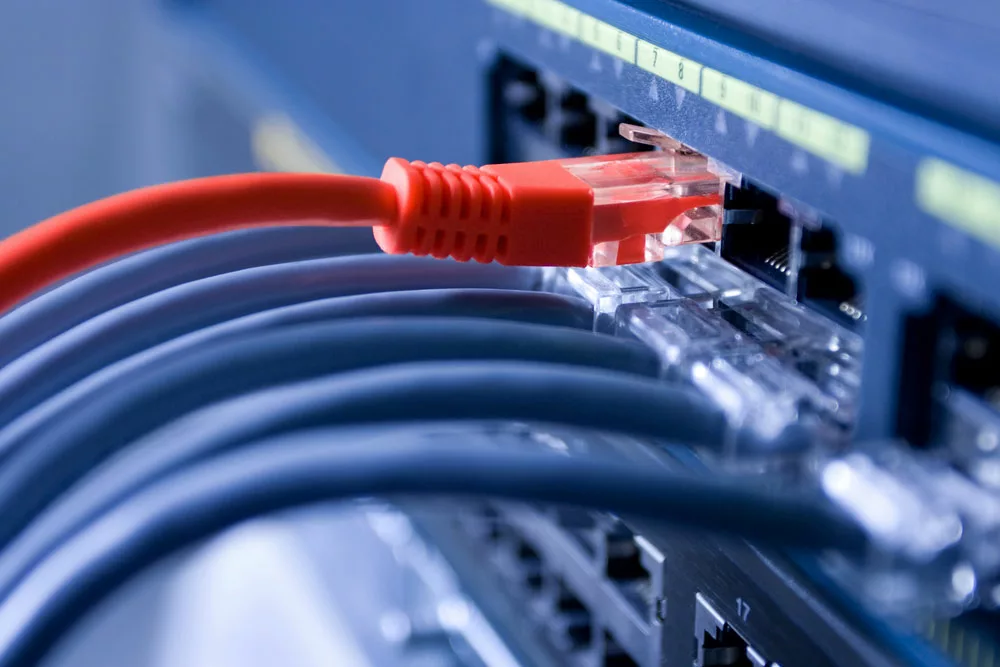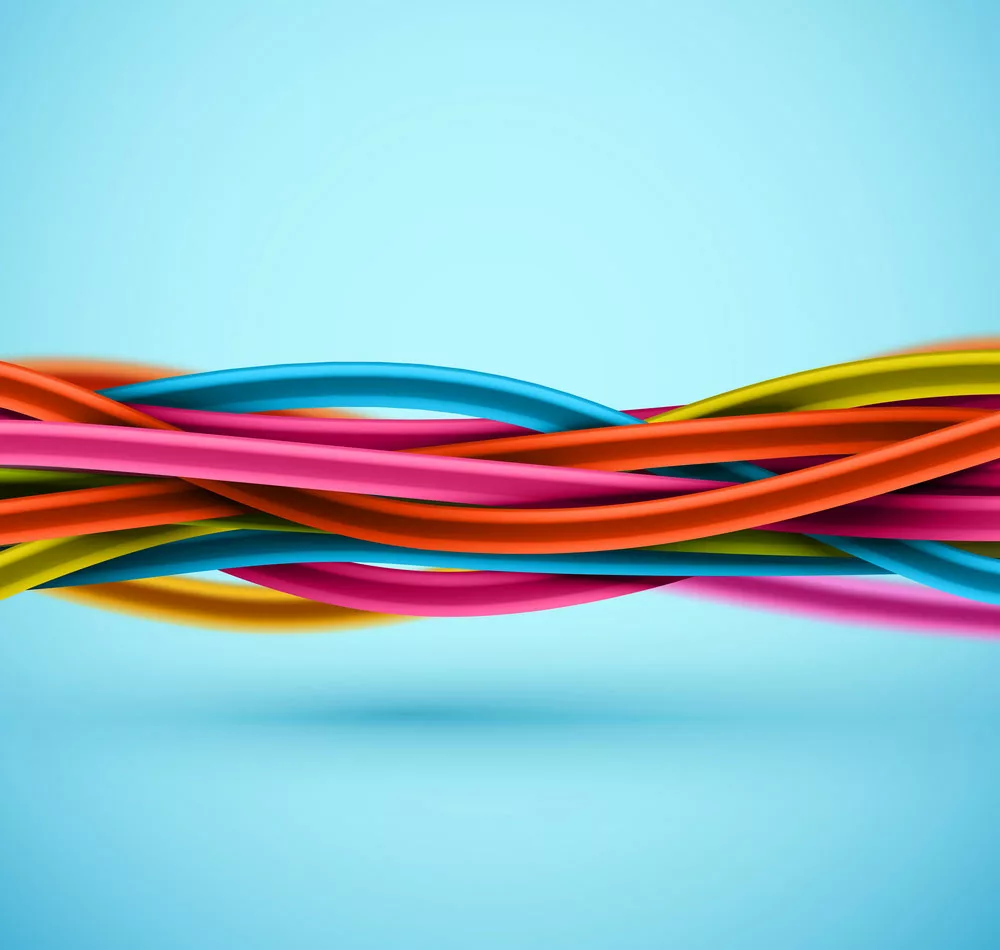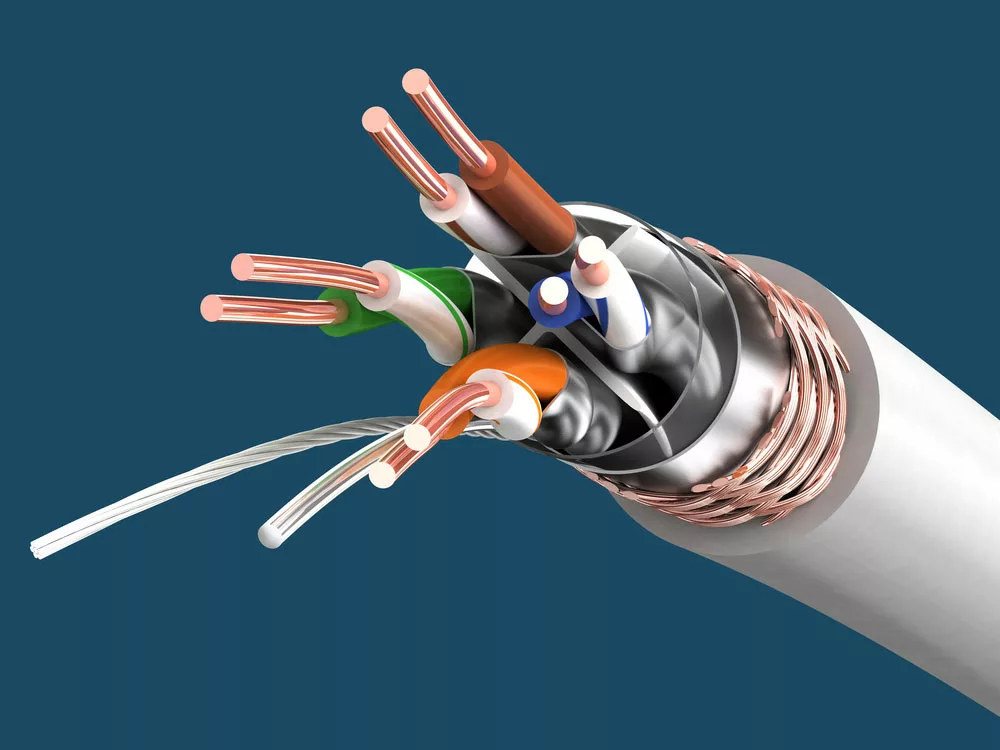The Cat Ethernet cable chart helps you choose the best Ethernet cable for your internet connection.
Ethernet is a game-changing technology and a way to connect and network devices in a local area network (LAN). Usually, the Ethernet you use makes a difference in your network connectivity.
With many alternatives available, such as Cat5, Cat5e, Cat6, Cat6a, or Cat7, choosing an Ethernet cable that will perform best without going overboard is difficult. Don’t worry. This article briefly overviews the Cat Ethernet cable standard to help you.
Table of Contents
- Categories for Ethernet Cables
- Cat Ethernet cable chart
- Why do different cat Ethernet cables have different specifications?
- Conclusion
Categories for Ethernet Cables
When looking for Ethernet cables that suit your internet needs, you will come across several groups or categories, abbreviated as Cat.
It is a value that represents the cable’s specifications and is recognized by TIA. You are likely to find better performance with more advanced Ethernet cables.
You can use various Ethernet cables with computers and network devices. The notable cables with the most users are Cat5, Cat5e, Cat6, Cat6a, and Cat7.

Computer network telecommunication
Cat Ethernet cable chart
Here is the basic description of the most popular Ethernet cable types, helping you choose a category ideal for your office or home setting.
| Cat5 | Cat5e | Cat6 | Cat6A | Cat7 | Cat7a | Cat8 | |
| # of conductors | 4 or 8 | 8 | 8 | 8 | 8 | 8 | 8 |
| American Wire Gauge | 24 AWG | 24 AWG | 23 AWG | 23 AWG | 22 AWG | 22 AWG | 22AWG |
| Standard Bandwidth | 100MHz | 100MHz | 250MHz | 500MHz | 600MHz | 1000MHz | 2000MHz |
| Max Data Rate | 100Mbps | 1000Mbps | 1000Mbps | 1Gbps / 10Gbps | 10Gbps/40Gbps | 10Gbps | 25Gbps /40Gbps |
| Shielding Type | Unshielded or Shielded | STP or UTP | Unshielded or Shielded | UTP or STP | Shielded only | Shielded only | Shielded only |
| Maximum Cable Length (in meters) | 100 | 100 | 100 | 100 or 50 | 100 or 50 | 100 | 30 |
| Networks Supported | 100BASE-T | 1000BASE-T | 1000BASE-T | 10GBASE-T | 10GBASE-T | 10GBASE-T | 25GBASE-T40GBASE-T |
| Performance Standard | ANSI/TIA | ANSI/TIA | ANSI/TIA | ANSI/TIA | ISO/IEC. | ISO/IEC. | ANSI/TIA |
| Connector type | RJ45 | RJ45 | RJ45 | RJ45 | GG45 | GG45 | RJ45 |
| # of connectors in Channel | 4 | 4 | 4 | 4 | 4 | 4 | 2 |
| Cost | Low | Low | Fair | Fair | Moderate | Moderate | High |
| Application | Most homes and small Enterprises can use this cable. However, you cannot use it for new cabling because it’s outdated. | The cable is the best cost-effective option with enhanced home and business networking features. | It is another cost-effective choice for new network installation. It has enough capacity to support most small and medium-sized organizations. | This cable is a cost-effective alternative for large network deployments. It has sufficient capacity for most small and medium-sized organizations. | Due to the additional insulation, the cable is extremely rigid and challenging to bend and fish. It’s only advisable for new construction. | Applications requiring the transfer of frequencies up to 600 Mbps can use the Cat7 cable. | It is extremely expensive and only appropriate for network settings where speed is crucial. |
Note
The denotation e in Cat5e stands for enhanced, while the denotation “a” in Cat6a and Cat7a stands for augmented.
The cable frequency (Megahertz, or MHz) often determines how quickly a signal cycles through every second. For example, a million cycles per second is 1 MHz Cat5 cables can handle 100 million signals per second, or 100 MHz up to 100 million.
Today, you can find a Cat8 Ethernet cable with a maximum bandwidth of two billion (2 GHz) signals per second, which is 20 times more than Cat5.
The data rate is not the same, but a related concept. Higher frequencies can carry more 1s and 0s, which increases the amount of data that can be communicated within a second.
For example, a cable operating at 100 MHz can transfer 100 MB per second. If you’re dealing with high-category cables like Cat8, you realize they transmit more data bits in the same period.

Illustration closeup of electric cable
Why do different cat Ethernet cables have different specifications?
Increasing the frequency and, subsequently, the data rate is by increasing the conductor wire’s gauge, twisting the wires more, or adding shielding to each pair of conductors.
Copper’s Quality
The size of the Ethernet cable conductor is one element that restricts its overall length and data throughput. For example, the transmission via a thin wire is more resistant to electrical current.
Therefore, it is easier for electrons to pass through larger conductors with lower resistance and less signal loss.
The American Wire Gauge (AWG) standard sizes help describe the diameter or gauge of a cable’s connector. A 24 AWG conductor has a diameter of 0.0201 inches.
Similarly, a 28 AWG conductor has about half the size or 0.0126 inches. In most cases, the conductor diameter increases as the AWG gauge decreases.
In addition, cat cables come in two varieties: solid and stranded. The solid Cat cable supports longer Ethernet usage distances and therefore is used in commercial buildings.
You can connect two pieces of electronic equipment using stranded cables because they are more flexible and are ideal for short distances.
Cat Ethernet Cable Chart: Cable Shielding or Absence of Shielding
The ethernet cables on the market are either shielded or unshielded. Shielded Cat cables use more insulation, which lessens crosstalk or electromagnetic interference.
The absence of shielding will cause more crosstalk because there is no insulation.
Shielded twisted pair (STP) or shielded cables have an additional layer of defense against radio frequency interference. The shield lowers signal noise which can deteriorate the cable’s ability to deliver high-quality data.
You mostly use the shielded cables in locations with a high risk of electromagnetic interference, such as close to powerful motors.
With unshielded cables, there is no extra layer of security. These cables are less expensive and easier to install but more vulnerable to RFI. The choice of an Ethernet cable depends on the application and environment you will use it.
Remember that the more shielding a cable has, the less flexible it becomes.
Also, consider the potential of the cable for wear and tear. You must replace the cable if the additional shielding doesn’t provide less crosstalk.
Cat Ethernet Cable Chart: Twists on each pair
Electrical current flows through these wires as waves of compression that move across the electrons in the wires.
However, electrical energy moves through the areas outside the wires instead of how sound travels via air.
Crosstalk or electromagnetic radiation can disrupt the energy flowing through those wires from other electronic devices.
You can balance the current in Ethernet cables by twisting the wires together such that they all travel in the same direction.
When you twist the wires, the currents will flow into the other wire of the pair, causing the fields around the twisted pair to cancel.
So, twisting the wire pairs together makes sending data over a long distance possible without taking extra security steps.
Since a single data network cable can contain multiple twisted pairs, the number of twists per unit length is set up differently for each pair.
The rate is based on the prime numbers to ensure that no two twists ever line up. As a result, the cables’ crosstalk reduces.
For example, when dealing with a Cat5e cable, the wiring inside this cable is more tightly twisted than the Cat5e standard.
Hence, you will experience ten times faster speed in the Cat5e cable, and you will have a greater capacity for crosstalk-free distance distances.

Cat6a twisted pair
Conclusion
Most workplace and home local area networks use Cat Ethernet cable as the basis for their Ethernet connectivity.
Despite advancements in wireless technology, computer networks still need cables as a physical medium to transfer data between devices.
Several Ethernet categories are widely used worldwide, including Cat 5e, 6, 6a, 7, and 8. You must choose the proper cable for the right purpose because it’ll perform at varying levels.
Generally speaking, the greater the category number, the stronger the noise reduction, resulting in higher bandwidth.
